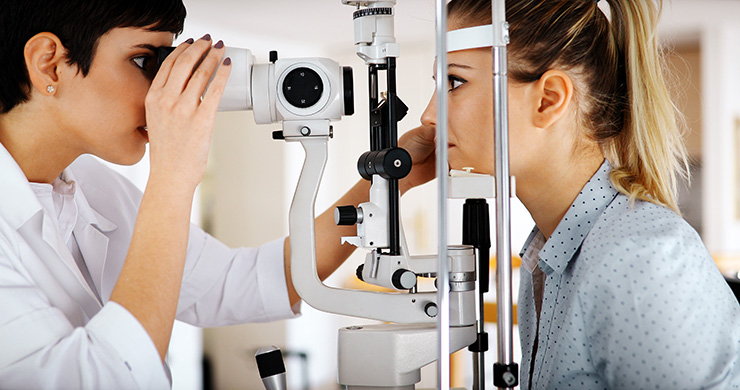Recognizing the Comprehensive Duty of an Optometrist in Modern Eye Treatment
In the evolving landscape of medical care, the scope of an optometrist's function has significantly widened, expanding well past the confines of conventional vision adjustment. With innovations in technology and an increasing emphasis on preventive treatment, eye doctors are essential in identifying and managing chronic eye problems, while additionally participating in very early condition discovery. Their experience in sophisticated diagnostic strategies such as optical coherence tomography is important. But how do these obligations converge with their duty in promoting overall eye wellness, and what does this mean for patient results in a collaborative medical care environment?
Expanded Extent of Practice
Recently, the function of optometrists has actually progressed considerably, with numerous specialists currently welcoming an increased extent of technique that expands past typical eye examinations. This advancement shows the growing acknowledgment of optometrists as main doctor in the field of eye care. Their duties now include a large range of services, consisting of recommending medicines for eye conditions, taking care of chronic eye diseases, and doing small procedures. This shift has actually been driven by advancements in optometric education, improved scientific training, and the boosting demand for extensive eye treatment services, especially in underserved areas.
Even more, eye doctors are currently more included in joint treatment, functioning very closely with ophthalmologists, main treatment medical professionals, and various other healthcare specialists to ensure all natural individual treatment. This interprofessional cooperation is crucial in handling intricate situations that require a multidisciplinary method. Furthermore, optometrists are playing a crucial function in public wellness campaigns, such as vision screenings and eye health education and learning, targeted at enhancing neighborhood health end results.
The broadened extent of practice for eye doctors not just enhances their ability to supply detailed treatment yet additionally resolves the expanding demand for available and efficient eye treatment solutions, contributing to overall medical care improvements.
Very Early Disease Detection
Early detection of eye illness is progressively becoming a centerpiece in the broadened function of optometrists. As key eye treatment providers, eye doctors are uniquely positioned to determine very early signs of ocular problems such as glaucoma, macular deterioration, diabetic retinopathy, and cataracts. This pivotal duty is essential, as very early medical diagnosis can significantly enhance the administration and diagnosis of these problems, potentially stopping vision loss and boosting individual end results.
Eye doctors use detailed eye examinations to find subtle adjustments in vision and eye health. The capability to acknowledge early signs of systemic health issues, such as hypertension and diabetes, via ocular indicators additionally highlights the importance of normal eye exams.
Furthermore, eye doctors play an important duty in client education, emphasizing the value of regular eye examinations as component of overall health care. By fostering a positive approach to eye treatment, optometrists contribute substantially to public wellness, guaranteeing diseases are caught and handled successfully prior to they can advance.
Advanced Diagnostic Techniques
Advanced diagnostic strategies have actually revolutionized the technique of optometry, allowing experts to find and keep an eye on ocular illness with extraordinary accuracy. These advancements have transformed the optometric landscape, enabling extra advanced assessment and intervention strategies. Technologies such as optical comprehensibility tomography (OCT) give high-resolution, cross-sectional pictures of the retina, promoting very early detection of conditions like glaucoma and macular degeneration. This Recommended Reading non-invasive technique has actually come to be vital in contemporary optometry, using thorough insights right into retinal layers.
One more critical improvement is electronic retinal imaging, which catches detailed views of the retina making use of high-definition electronic cameras. This technology is essential in identifying modifications in retinal framework with time, thereby assisting in the administration of conditions like diabetic person retinopathy. Aesthetic area screening, improved by computer-aided systems, permits precise mapping of a person's line of vision, crucial in tracking and detecting glaucoma progression.
Corneal topography, an additional noteworthy analysis tool, creates detailed maps of the cornea's surface. This is especially advantageous in fitting contact lenses and preparing refractive surgery. These sophisticated diagnostic techniques collectively make it possible for eye doctors to give proactive, targeted treatment, guaranteeing better client outcomes and reinforcing their critical function in eye wellness management.
Handling Persistent Eye Problems
Handling persistent eye problems is a foundation of optometric treatment that needs a comprehensive understanding of numerous ocular conditions and their long-term implications. Eye doctors play a pivotal duty in diagnosing, monitoring, and handling problems such as glaucoma, diabetic retinopathy, and age-related macular deterioration. These problems, if left unattended, can bring about substantial aesthetic impairment or blindness, highlighting the essential importance of recurring treatment and administration.
Optometrists employ a variety of diagnostic tools, including optical comprehensibility tomography (OCT), aesthetic area testing, and fundus digital photography, to evaluate the development of these persistent problems. By wikipedia reference very closely keeping an eye on changes in eye wellness, eye doctors can adjust treatment plans to minimize condition progression. This might involve suggesting drugs, suggesting lifestyle modifications, or coordinating with eye doctors for medical interventions when needed.

Duty in Preventive Care
Precautionary treatment is a fundamental element of optometry that focuses on preserving eye health and wellness and preventing the start of ocular illness. Eye doctors play an important duty in early detection and prevention, using normal eye exams to determine threat elements and refined adjustments in eye health and wellness. Optometrist Chino. These assessments are not simply regarding vision modification however encompass a comprehensive evaluation of eye functions and frameworks, enabling the recognition of conditions such as glaucoma, cataracts, and macular deterioration at an onset
In addition to diagnostics, optometrists inform clients on lifestyle selections that promote eye wellness, such as appropriate nutrition, UV defense, and the significance of normal eye examinations. They suggest on content the proper use electronic devices to avoid electronic eye strain, an expanding worry in the electronic age. Eye doctors likewise provide advice on protective eyeglasses for occupational and entertainment tasks, alleviating the threat of injury.
Preventative eye care includes systemic wellness concerns that manifest in the eyes, such as diabetes and hypertension. By working together with various other healthcare experts, eye doctors add to holistic individual treatment, emphasizing the interconnectedness of eye and systemic wellness. This aggressive approach is crucial in guarding visual acuity and general wellness.
Final Thought
Optometrists currently occupy a crucial role in contemporary eye treatment, defined by an increased scope that includes detecting and managing persistent eye conditions, suggesting medicines, and executing minor surgical procedures (Opticore Optometry). Their experience in early disease detection is enhanced by advanced analysis methods such as optical comprehensibility tomography and digital retinal imaging. By emphasizing precautionary care and patient education and learning, optometrists add substantially to general eye health and wellness, working together with other health care professionals to make certain efficient and thorough client outcomes

In enhancement to diagnostics, optometrists educate individuals on lifestyle selections that advertise eye health and wellness, such as proper nutrition, UV security, and the value of routine eye exams.Precautionary eye care extends to systemic health problems that show up in the eyes, such as diabetes mellitus and hypertension.Optometrists now occupy a critical role in contemporary eye treatment, defined by a broadened extent that includes detecting and managing persistent eye conditions, suggesting medicines, and performing minor surgical treatments.